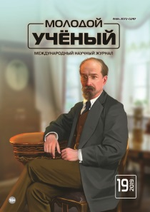The usage of techniques to develop reaction of future interpreters and train them in oral translation classes will be helpful in the interpretation process. Interpreters can work in different situations and often can face on uncomfortable process: when a speaker’s speech is fast and an interpreter with untrained memory can lag behind so much. Some situations of interpretation can distract an interpreter’s attention and if interpreters being managed to obtain some techniques as dual-tasks at practical lessons of oral translation, they will overcome problems and concentrate easily.
Dual-task training: This exercise essentially involves asking students to listen to a recorded speech, which is the first task. The second task is designed to serve as a certain kind of distraction from the first task and involves counting backwards or forwards on the part of students either in their mother tongue or foreign language. To test students’ attention to the first task, a recall test in the form of an oral summary of the main ideas of the text is applied.In the first task students will be involved in translation of word phrases into Uzbek at the same time the second task, comprehensive listening will be recorded or provided by a teacher.
Task 1:
|
|
|
|
|
|
|
|
|
|
|
|
|
|
|
|
|
|
|
|
Task 2:
Exercise 5.1 (comprehensive listening):
Yesterday Tom has an unforgettable experience. While driving to school, he had seen a crowd in the street. He asked a person what they were doing. “Well, Robbin William’s here. Everybody wants to see him and have his signature”
…. “Wow” — Tom thought “He’s my idol. But how to get close? I have an examination this morning”. Leaving with regret, he got so surprised and couldn’t believe his eyes, a stranger in his car, looking at him and smiling “Come on, guy. Help me to hide, just a moment”- Robbin said.
After playing tapes, the listeners are required to say what they can remember about the story:
− Name of the main character: Tom
− Time: Yesterday
− Event: Robbin William — his idol — asked Tom to help him avoid the crowd.
Visual short-term memory improvement: Thanks to short-term memory, visual processing can be improved by asking trainees pointless image to check how they remember the objects in the pictures properly. After showing this crazy, pointless image, the quiz might have any of the following questions: How many boats are there in the picture? How many kids have their mouths open? Is the structure on the land (A) a house, (B) a church, (C) a tent. How many ducklings are there in the picture? Is anyone wearing a green shirt? Is the shape on the foremost boy’s shirt (A) a circle, (B) a square, (D) a crescent, (E) a star? Is there any blue sky showing in the picture? The picture will be shown for 10 seconds.
Word performance: In the form of an academic practice, this method uses a list of words (preferred in foreign language) in different forms or parts of speech. At the simple level, trainees are asked to rewrite as many words as possible [2].
|
8. |
|
6. |
|
4. |
|
5. |
|
2. |
|
1. |
|
7. |
|
3. |
Lag exercises (Shadowing or Parroting):The purpose of such exercises is to force students to lag behind the speaker. First, students are asked to shadow single words, so that when they hear the word, they say it simultaneously. Then students are asked to stay behind the speaker by shadowing every second word: when they hear the first word (e.g. class), students remain silent and hold the word in their STM; note-taking is not permissible. Once the second word (e.g. teacher) is delivered, students should utter ‘class’ at the same time as they hear ‘teacher’. Once students master this task, they are asked to let two words pass before shadowing in sentence: The high-level talks [Lag] are expected to conclude [Lag] in signing of a number of [Lag]intergovernmental, inter-agency [Lag] and other documents [Lag] aimed at deepening [Lag] Uzbek-Chinese ties [Lag] in various fields. Likewise the leading businesses [Lag] of the two countries [Lag] are expected to conclude [Lag] financial accords and agreements. In the next step the students will translate this small passage with helping of technique lag exercise: Юқори даражадаги музокараларда турли соҳаларда Ўзбекистон-Хитой муносабатларини ривожлантиришга қаратилган бир қатор ҳукуматлараро, идоралараро ва бошқа ҳужжатлар имзоланиши кутилмоқда. Шунингдек, икки мамлакатнинг этакчи ишбилармонлар ўртасида молиявий келишувлар ва битимларнинг тузиши кутилмоқда.
The current scientific research has evaluated the use of a short-term memory in interpreting, with focus on application of a short-term memory as an interpreting skill as well as it also has discussed the most practical suggestions to help students in Translation department is understandable that short-term memory trainings are helpful tools to assist students in the process of accumulating interpreting skills. Obviously, the nature of a short-term memory itself makes it an outstanding tool for further emphasis on managing information. In educational perspective, a short-term memory is proved to be the pivotal factor, determining learning results and the success of learners. Therefore, it is definitely necessary for students to take up training a short-term memory, and the students of Translation department are no exception. These techniques develop interpreters’ reaction who can work in different situation and sometimes can face an uncomfortable process: when the uttered speech is fast and an interpreter can lag much behind. In this case if interpreters are trained with lag exercise they will follow the minimum norms of lag behind.
References:
- A. Muminov “A Guide to consecutive translation”/ Tashkent, 2013, p.139
- Tran Thuy Duong “How to improve short-term memory in interpreting” Hanoi — 2006, p.3







